S-1
|
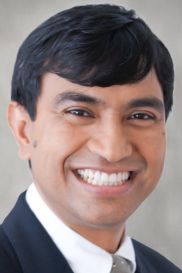
Achin Bhowmik
CTO & EVP of Engineering, Starkey Hearing Technologies
Adjunct Professor, Stanford University
|
S-1: Fundamentals of Virtual and Augmented-Reality Technologies
|
|
Virtual- and augmented-reality technologies have made significant progress in recent years. These devices promise to deliver immersive and interactive experiences, seamlessly blending computationally created 3D objects into the physical world and thereby enabling myriad new exciting applications that are increasingly blurring the border between the real and the virtual worlds.
This short course will present a tutorial of these technologies and applications, covering the system-level requirements from cognitive neuroscience and human-factors considerations, advances in 3D motion tracking with visual-inertial sensing techniques, 3D graphics processing and perceptual computing, spatial-light modulation and display technologies, 3D sound processing, visual and language understanding with artificial intelligence, end-to-end system architecture, and the emerging applications toward achieving life-like immersive and interactive experiences.
Achin Bhowmik is the chief technology officer and executive vice president of engineering at Starkey Hearing Technologies, a privately held medical devices business with over 6,000 employees and operations in over 100 countries worldwide. In this role, he is responsible for the company’s technology strategy, research, product development, and engineering departments, and is leading the drive to transform hearing aids into multifunction wearable health devices with advanced sensors and artificial intelligence technologies. Prior to joining Starkey, Dr. Bhowmik was vice president and general manager of the Perceptual Computing Group at Intel Corporation. There, he was responsible for the R&D, engineering, operations, and businesses in the areas of 3D sensing and interactive computing, computer vision and artificial intelligence, autonomous robots and drones, and immersive virtual and merged reality devices. Previously, he served as the chief of staff of the Personal Computing Group, Intel’s largest business unit with >$30 billion in annual revenues in 2010. Dr. Bhowmik is an adjunct professor at Stanford University, where he advises research and teaches courses in the areas of multisensory cognition enabled by perceptual computing and artificial intelligence. He has also held adjunct and guest professor roles at the University of California, Berkeley; Liquid Crystal Institute of Kent State University; Kyung Hee University, Seoul; and the Indian Institute of Technology, Gandhinagar. Dr. Bhowmik was elected a Fellow of the Society for Information Display (SID). He serves on the board of trustees for the National Captioning Institute, board of directors for OpenCV, executive board for SID, and board of advisors for the Fung Institute for Engineering Leadership at UC Berkeley. He also serves on the board of directors and advisors for several technology startup companies. He received the Industrial Distinguished Leader Award from the Asia-Pacific Signal and Information Processing Association. He has over 200 publications, including two books and 37 issued patents.
|
S-2
|
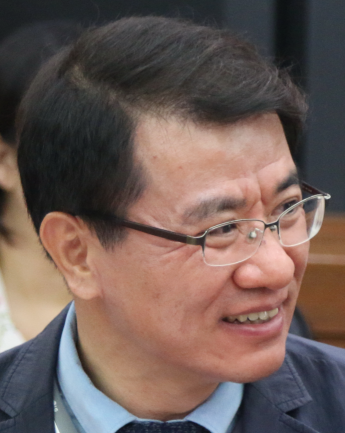 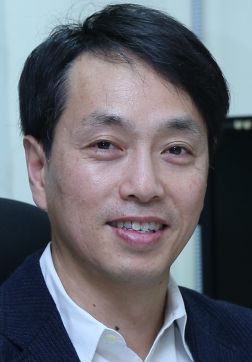
MunPyo Hong Hyun Jae Kim
Professor Professor
Korea University Yonsei University
|
S-2: Fundamentals of TFTs for OLEDs and MicroLEDs
|
|
MunPyo Hong will describe the fundamental physics of semiconducting materials (including silicon, metal oxide, and organic) forming as thin-film (TF) structures. Based on the understanding of the properties of each semiconductor TF, the operation principles of thin-film transistors (TFTs) will be described as compared with those of typical metal-insulator-semiconductor field-effect transistors (MOSFETs). In addition, this part of the course will examine the root cause of instabilities in specific TFTs depending on the semiconducting TF materials and the device architectures.
Hyun Jae Kim will describe in detail the contents of technology trends in materials and processes and the various applications of TFTs. Low-temperature polysilicon (LTPS) TFT and oxide TFT in particular will be the main subjects of this part of the course. Furthermore, the course will provide a basic understanding of emerging LTPO (LTPS + oxide) technologies. The subject of flexible and stretchable TFT technologies for OLED displays and future possible TFTs for microLED displays will also be covered.
MunPyo Hong received B.S. and M.S degrees in nuclear engineering from Hanyang University, Seoul, Korea, in 1987 and 1989, respectively, and a Ph.D. in engineering physics (plasma physics) from the University of Wisconsin-Madison in 1995. He is currently a professor with the Division of Display and Semiconductor Physics and a director of the Stretchable Display Innovative Research Cluster at Korea University. Previously, he was a joint professor with the School of Information & Communication Engineering at Sungkyunkwan University, Korea, from 2000 to 2006. He worked with Samsung Electronics LCD R&D Center (currently Samsung Display) as principal engineer/group leader/project manager from 1995 to 2006. Hong’s research interests focus on the development of stretchable and wearable displays, new plasma processes, organic electronic device and gas barrier coatings, next-generation TFTs, and e-skin technology.
Hyun Jae Kim is a professor affiliated with the school of electrical and electronic engineering at Yonsei University in Seoul, Korea. He received his Ph.D. in materials science and engineering at Columbia University in 1996. Previously, he was employed as a principal researcher at Samsung Electronics and conducted research and development related to LTPS TFT technology. Furthermore, he contributed his research to the initial commercialization of mobile high-resolution LCD and OLED display products. Ever since, his research has been focused on various electronic devices such as oxide TFTs, biosensors, photosensors, ReRAMs, and energy-storage devices, with approximately 200 research papers over a period of 20 years.
|
S-3
|
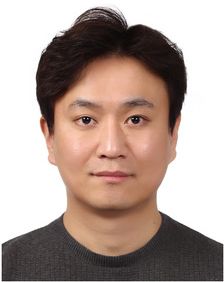 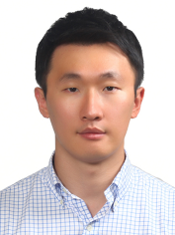
Wan Ki Bae Jaehoon Lim
Assistant Professor Assistant Professor
Sungkyunkwan University Sungkyunkwan University
|
S-3: Fundamentals of Quantum Dots
|
|
Colloidal quantum dots (QDs) have become one of the most promising material candidates for next-generation displays owing to their facile band-gap tunability and high photoluminescence quantum yield (PLQY). This short course describes the fundamental chemistry and photophysics of QDs and their design principles for efficient light-emitting applications, with particular focus on electroluminescent devices.
Wan Ki Bae received his Ph.D. from the School of Chemical & Biological Engineering at Seoul National University in 2009. He is an assistant professor at the Sungkyunkwan Advanced Institute of Nanotechnology (SAINT) at Sungkyunkwan University. He has also been a senior researcher at both the Korea Institute of Science and Technology (2013 - 2018), and a postdoctoral researcher at Los Alamos National Laboratory (2010 - 2013) and the School of Electrical Engineering & Computer Science at Seoul National University (2009 - 2010). His areas of expertise include optoelectronic devices (light-emitting diodes, photodetectors, and photovoltaic devices) based on quantum dots; the photophysical properties of quantum dots; and the synthesis and characterization of quantum dots.
Jaehoon Lim received his Ph.D. in chemical engineering from Seoul National University (South Korea) in 2013 under the supervision of Professors Kookheon Char and Seonghoon Lee. Thereafter, he held a postdoctoral position at Inter-university Semiconductor Research Center at Seoul National University, working with Prof. Changhee Lee on organic-inorganic hybrid-based optoelectronic devices. In 2014, he moved to Dr. Victor I. Klimov’s group at Los Alamos National Laboratory as a postdoctoral fellow. In 2018, he joined the Department of Chemical Engineering at Ajou University as an assistant professor. In 2020, he joined the Department of Energy Science at Sungkyunkwan University as an assistant professor. His research interests include the compositional and structural design of colloidal semiconductor nanomaterials, carrier dynamics in low-dimensional materials, and their applications for light-emitting diodes and lasers.
|
S-4
|
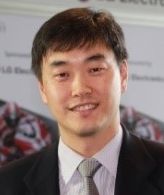 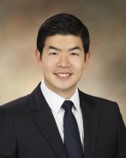
Byung Doo Chin Jaesang Lee
Professor Assistant Professor
Dankook University Seoul National University
|
S-4: Fundamentals of High-Efficiency/Long-Lifetime OLEDs
|
|
Byung Doo Chin will describe emerging technologies in the progress of organic light-emitting diodes (OLEDs), with special focus on the evolution of high-efficiency device performance. In spite of significant progress in many up-to-date features of flexible and large-area OLEDs, there still exist some critical issues to be resolved; for example, a stable and high-efficiency blue OLED and reliability in solution OLEDs. Therefore, related topics toward a development of novel materials and other aspects will be discussed in detail. This first part of the short course will also examine the issues of flexible device manufacturing with some future advancements, as well as the impact of light extraction for OLED display panels.
The second half of this short course will address the short operational lifetime of OLEDs, which by far has been the most critical and challenging issue in OLED R&D over the years. Jaesang Lee will introduce the current status of OLED lifetimes and the importance of long lifetimes from the product perspective. He will then explore the physical and chemical origins of OLED degradation derived from experimental and theoretical studies. The degraded by-product, or defects, in aged OLEDs are a determining factor in reducing device performance and may provide useful clues to understanding degradation mechanisms. Analysis of OLED defects and lifetime improvement strategies will be discussed.
Byung Doo Chin is a professor in the polymer science and engineering department at Dankook University, Korea. He received his B.S. from Yonsei University, and his M.S./Ph.D. degree from KAIST. Before joining Dankook University in 2009, he worked as a postdoctoral scientist at University of Massachusetts Amherst, and as a senior engineer at Samsung SDI R&D Center and Korea Institute of Science and Technology (KIST). His research fields for the past 18 or more years (with about 80 research papers) include AMOLED front-plane device physics and fabrication processes, quantum-dot light-emitting devices patterned by inkjet/nozzle printing, and light-extraction structures for flexible OLEDs.
Jaesang Lee is an assistant professor of electrical and computer engineering at Seoul National University, Korea. He leads the intelligent display and sensor laboratory (IDSL), which is focused on semiconductor optoelectronic devices for display and sensor applications. The research topics of IDSL include optoelectronic properties and the operational stability of organic semiconductor devices, data-driven studies of OLED characteristics, and micro-patterning technologies for VR µOLEDs. Prior to joining SNU in 2019, Jaesang was a display module engineer at Apple, Inc. He received his Ph.D. from the University of Michigan in 2017 and graduated from Seoul National University in 2011. His doctoral dissertation focused on the physical and chemical origins of short lifetimes and low efficiency for blue phosphorescent OLEDs.
|
S-5
|
 
Chien-Chung Lin Keon Jae Lee
Professor Professor
National Chiao Tung University KAIST
|
S-5: Fundamentals of Micro and MiniLED Displays
|
|
In the first part of this short course, Chien-Chung Lin will focus on the physics of the light-emitting diode and the effects of miniaturization. The elements of micro/miniLED displays will be discussed and current trends and new developments revealed.
In the second part of the course, Keon Jae Lee will introduce flexible vertical GaAs/GaN microLEDs on plastic substrates using anisotropic conductive film (ACF), resulting in high optical power density. The superior properties of the flexible inorganic LED enable the dramatic extension of flexible displays toward not only wearable devices of light sources but also full-color flexible microLED displays for consumer TVs. Also discussed will be microLED stimulation of specific neural populations of the brain, one of the facile and reliable methods used in neuroscience for deduction of functional movement, complex behavior, and even long-range connectivity. Results show how a flexible LED can be used in implantable biomedical applications such as skin research and phototherapy.
Chien-Chung Lin received his B.S. degree in electrical engineering from the National Taiwan University in 1993, and his M.S. and Ph.D. degrees in electrical engineering from Stanford University in 1997 and 2002, respectively. Since 2009, he has been with National Chiao Tung University (NCTU), in Tainan, Taiwan, where he holds a position as a professor. The major research efforts in his group are in design and fabrication of novel optoelectronic devices, including LEDs, solar cells, and lasers. Before joining NCTU, he worked for different start-ups in the United States, including E2O Communications, Inc., and Santur Corp. From 2015 to 2017, he was the recipient of the Young Investigator Research Grant by the Ministry of Science and Technology of Taiwan. He has more than 200 journal and conference publications and is a Fellow of the Optical Society (formerly the Optical Society of America) and a senior member of the IEEE Photonic Society.
Keon Jae Lee received his Ph.D. in materials science and engineering (MSE) at the University of Illinois, Urbana-Champaign (UIUC). During his Ph.D. work at UIUC, he was involved in the first co-invention of “flexible single-crystalline inorganic electronics,” using top-down semiconductors and soft lithographic transfer. Since 2009, he has been a professor in MSE at KAIST. His current research topics are self-powered flexible electronic systems including self-powered sensors/energy harvesters, microLEDs, neuromorphic memory/large-scale integration (LSI), and laser material interaction for in vivo biomedical applications.
|